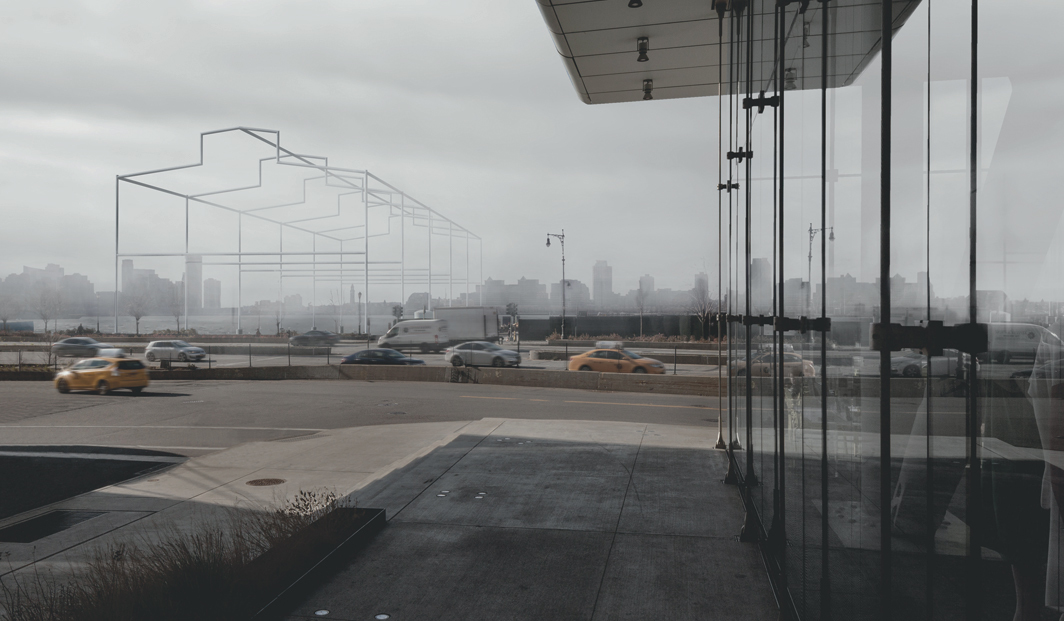A CLOSED LOOP
PICTURES IN ROOMS
FIELD WORK
ARRIVE BY MAGIC
2021/10/11

David Hammons, Day’s End, 2021. Rendering.
On the top left corner, crouching over the strip of pixel that ambiguously marks the boarder of water and land, the armature feels like the skeleton of an ancient beast. Meanwhile, everything else shrivels under its imposing presence. You could say the buildings on the other side of the Hudson River only seem small because they are further away, but in talking about images, scale is more of an absolute.
The other contributing factor to the armature's illusion of scale is its interior, undivided apart from the beams across its midsection. Filling out the perimeters like hand in glove, the continuous space inside rejects the dividing lines present in most large-scale urban architectures (an example at hand would be the glass facade in the foreground, split into many panels), which trivialize the singularity of the structure itself, and bring down the sense of monumentality.
As the posterior of the armature extends into the misty grey sky, the repeating strokes get smaller and fainter, almost becoming a string of afterimages to the front-facing facade, propelling it forward. As a result, the armature crushes into the traffic like a ghost train, and projects beyond the image plane. The thin fog which the train emerges from also conceals the lack of subtlety in its digitally generated boarders, just enough to suspend my disbelief.
On another note, there were many glaring contradictions in this image that give away its post-processedness. Like the crips shadow and the overcast sky, and how the foreground building is lit opposite to the moving vehicles. However, as long as each element stays grounded in its own logic, the spell of realism is not broken.
Right after I started to draft this short write-up, I came across a mix-media work on paper titled Asijah in a book about Anselm Kiefer, which notably also portrayed a skeletal structure by a body of water, similarly monumental and unoccupied, pointing to the same direction. Only it was the glimmering surface of photographic water that challenged the uncanny in Kiefer's image.

Anselm Kiefer, Asijah, 2003. Guache on photo paper. 117.7*126.8cm